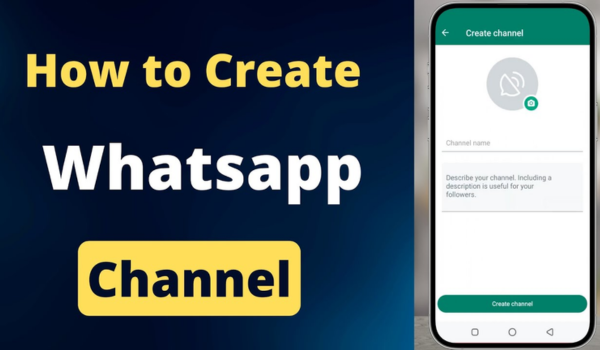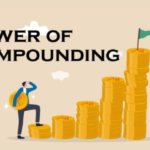Introduction:
Brief Overview of WhatsApp and Its Significance:
Start by introducing WhatsApp, one of the world’s most popular messaging apps, used by millions of people globally for both personal and business communication. Highlight its importance as a tool for real-time, direct communication.
Explanation of WhatsApp Channels and Their Benefits:
Explain what WhatsApp channels are. A WhatsApp channel allows businesses and individuals to broadcast messages to a large audience. Unlike groups, channels are typically used for one-way communication where the admin sends messages, and the subscribers receive them. Discuss the benefits, such as direct reach to an engaged audience, high open rates compared to emails, and the ability to share multimedia content.
Purpose of the Blog Post:
State the aim of the blog post, which is to provide a step-by-step guide on creating a WhatsApp channel, managing it effectively, and leveraging it for communication and engagement.
Section 1: Understanding WhatsApp Channels
Definition of WhatsApp Channels:
Provide a clear definition of WhatsApp channels, explaining how they function within the app. Highlight that channels are typically used for announcements, updates, and broadcasting messages to multiple users simultaneously.
Differences Between WhatsApp Channels, Groups, and Broadcast Lists:
Clarify the differences:
Channels: Primarily for one-way communication, managed by an admin.
Groups: Interactive, allowing all members to communicate with each other.
Broadcast Lists: Send messages to multiple contacts individually, but responses come back as individual chats.
Use Cases for WhatsApp Channels (e.g., Businesses, Communities, Influencers):
Provide examples of how different entities use WhatsApp channels:
Businesses: For customer updates, promotions, and support.
Communities: For sharing news and updates with members.
Influencers: For engaging with followers and sharing exclusive content.
Section 2: Preparing to Create a WhatsApp Channel
Necessary Requirements (e.g., WhatsApp Business App):
List the prerequisites for creating a WhatsApp channel, such as downloading and installing the WhatsApp Business App, which offers more features suited for managing a channel compared to the regular WhatsApp app.
Planning Your Channel’s Purpose and Content Strategy:
Discuss the importance of having a clear purpose and strategy for your channel. Define what type of content you will share, the frequency of updates, and the target audience.
Ensuring Compliance with WhatsApp’s Policies and Guidelines:
Emphasize the need to understand and adhere to WhatsApp’s terms of service and guidelines to avoid penalties or bans.
Section 3: Step-by-Step Guide to Creating a WhatsApp Channel
Step 1: Download and Install WhatsApp Business App:
Guide the reader through downloading and installing the WhatsApp Business App from the Google Play Store or Apple App Store.
Step 2: Set Up Your WhatsApp Business Account:
Provide instructions for setting up the WhatsApp Business account, including entering your business details, verifying your phone number, and completing your business profile.
Step 3: Create a New Channel Within the App:
Explain how to navigate the app to create a new channel, including the specific steps and menus to access this feature.
Step 4: Customize Your Channel (Name, Description, Profile Picture):
Detail how to personalize your channel with a name, description, and profile picture that represents your brand or purpose.
Step 5: Add Contacts to Your Channel:
Describe how to add initial contacts to your channel, either by inviting them directly or by sharing a join link.
Section 4: Managing Your WhatsApp Channel
Best Practices for Engaging with Your Audience:
Offer tips on maintaining high engagement levels, such as posting regularly, responding to feedback, and providing valuable content.
Tips for Regular Content Updates:
Suggest creating a content calendar to ensure consistent updates and to plan out posts in advance.
Utilizing Features Like Quick Replies, Labels, and Automated Messages:
Explain how to use WhatsApp Business features like quick replies to common questions, labels to organize chats, and automated messages to greet new subscribers or provide instant responses.
Section 5: Promoting Your WhatsApp Channel
Strategies for Growing Your Channel’s Audience:
Provide strategies for increasing your channel’s subscriber base, such as promoting it on social media, your website, and through email newsletters.
Using Social Media and Other Platforms for Promotion:
Encourage cross-platform promotion by sharing your WhatsApp channel link on platforms like Facebook, Twitter, Instagram, and LinkedIn.
Encouraging Existing Contacts to Join and Share the Channel:
Suggest ways to leverage your existing contacts to grow your channel, such as incentivizing them to invite others or sharing the channel with their networks.
Section 6: Measuring Success and Optimizing Your Channel
Key Metrics to Track (Engagement, Growth, Retention):
Highlight the importance of tracking metrics like message open rates, engagement rates, subscriber growth, and retention to gauge the success of your channel.
Tools and Methods for Gathering Feedback:
Recommend using surveys, polls, and direct feedback to understand your audience’s needs and preferences.
Tips for Optimizing Content Based on Analytics:
Provide strategies for optimizing your content by analyzing performance data and adjusting your approach to improve engagement and reach.
Conclusion:
Recap of the Steps to Create and Manage a WhatsApp Channel:
Summarize the key steps covered in the blog, reinforcing the main points about setting up and managing a WhatsApp channel.
Encouragement to Start Building a Channel:
Motivate readers to take the initiative and start creating their own WhatsApp channel, emphasizing the potential benefits.
Final Thoughts on the Potential of WhatsApp Channels for Communication and Engagement:
Conclude with thoughts on how WhatsApp channels can be a powerful tool for effective communication and audience engagement, encouraging readers to leverage this platform for their needs.















